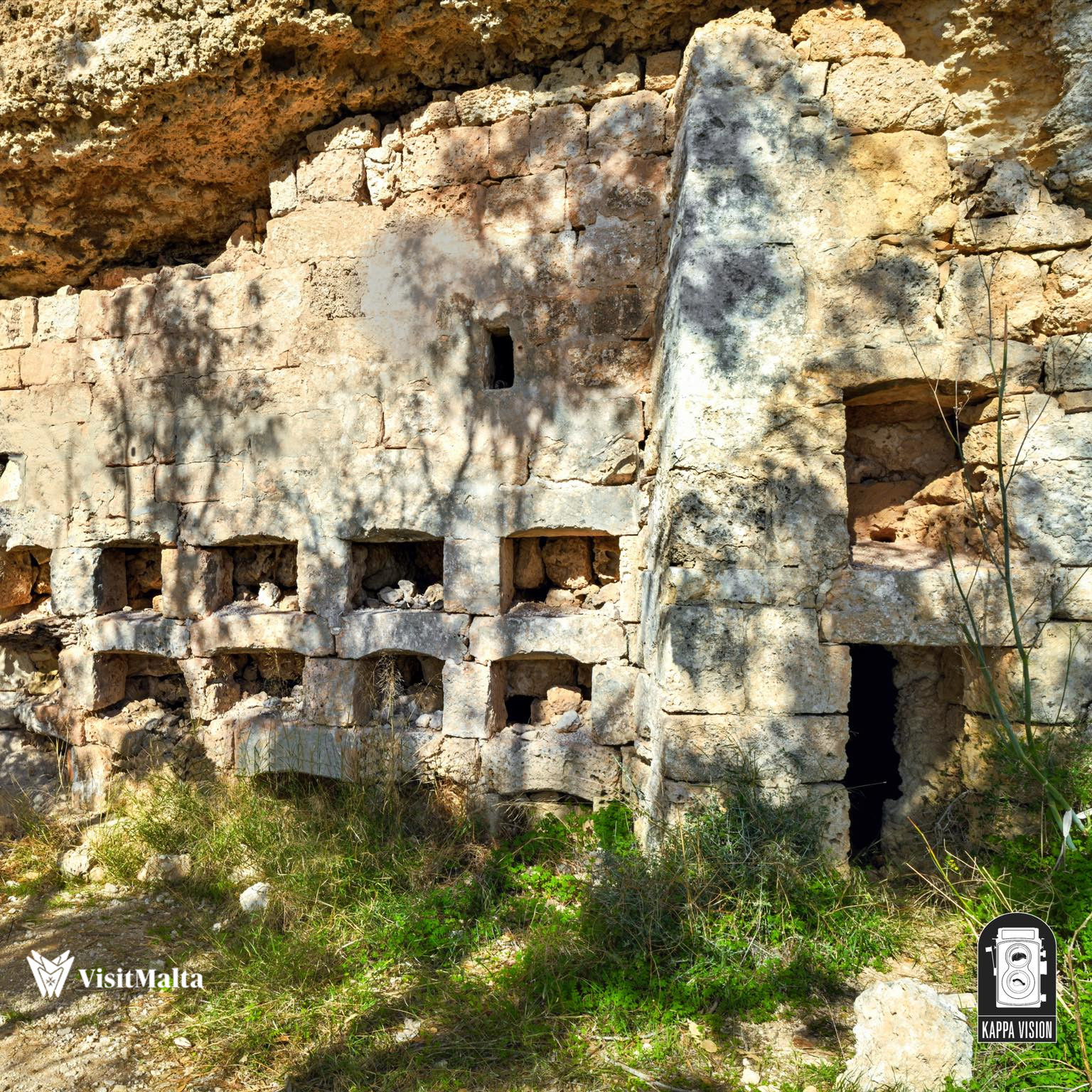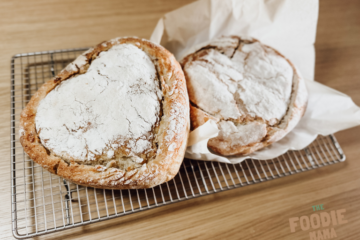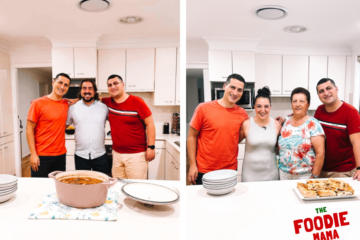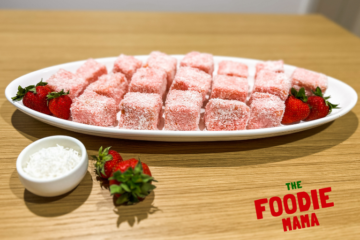Ġbejniet are a cheese that are unique to the Islands. I tried to think of a creative title for this article, but they are so unique, they deserve to have a title on its own. They are little cheeselets most commonly made with sheep milk, but can be made from any milk. The earliest evidence of this style of cheese making dates as far back as 1000 B.C. with traces of cow milk protein found on pottery in the style of an qaleb (cheese basket) in Baħrija.
What I love about my community on Instagram is that I learn things everyday, not just about food. A couple of months ago, I was making ġbejniet with my mum where I shared some snippets of the process. A mama friend I have met through Instagram who is of Syrian background and her husband of Lebanese background, had seen the word ġbejniet and messaged me asking what my nationality is. As we all know, the Maltese language derives from Siculo-Arabic. She told me that she writes cheese in Arabic as ‘jibneh‘. When I mentioned this to mum she said that ‘ġibna’ is the term she uses when the milk sets just after adding the rennet.
On further reading, ġbejna is indeed a modern Arabic word (جبنة). Ġobna (cheese), ġobon (cheeses), ġbejna, ġbejniet are all derived from Siculo-Arabic which was introduced into Malta in the high Middle Ages before it evolved into modern Maltese. The word ġbejna is used on its own to describe a small cheeselet. Other descriptive terms were added to convey an understanding of what type of cheese it was specifically, for example; ġbejna tan-nagħaġ (sheep cheeselet), tal-baqra (cow), tal-mogħoż (goat), friska (fresh), niexfa (dried hard), moxxa (dried semi-hard), tal-ġarra (in a terracotta pot/container) t’Għawdex (of Gozo) or tal-bżar (pepper).

Photo by: Pippa Mattei
When my mum used to finish school as a young girl, she used to go and feed the sheep and goats, milk them and then make ġbejniet in a mix of both sheep and goat’s milk – apparently they are much tastier when made with both milks. What I found interesting is she didn’t heat the milk up like we do today, she made the cheese quite literally ‘fresh’ at the temperature the milk came out which is around that 38 degrees Celsius point. She used to use baskets made out of cane, she said they were a pain to wash and didn’t enjoy that part all that much. Nanna used to then wash the ġbejniet once made and prepare them to either sell or to make traditional meals for the family; pastizzi, torta (cheese pie), qassatat (similar to pastizzi, not as flakey), kusksu (a broad bean and cheese soup), soppa tal-armla (widow’s soup) and even to make stuffing for pigeon! They are so versatile and can be prepared and eaten in so many ways, even dessert.
Now, ġbejniet are quite easy to make. I had always wanted to make them but, a little hesitant I must admit. Mum always made them growing up and since I moved out of home, will bring me some whenever she makes. I finally asked her to walk me through the process a few months ago. There is another method where they are made with regular full cream cow’s milk, junket tablets and milk powder. My method below is made with liquid rennet and unhomogenized cow’s milk – I like to stick as close to the traditional way of making them as possible.
I don’t know about you, but I’m feeling that ġbejniet are trending here in Australia at the moment. I feel every time I scroll down my Facebook feed, I see someone sharing their batches of fresh or dried ġbejniet and everyone commenting asking if they are selling or where to buy them from. This traditional Maltese cheese has become quite a rare find in the shops here in Sydney that, if you do find them, fresh can be at over $30 per kilo or dried at a high price of over $80.00 per kilo!
So, if you’re craving a little Maltese cheese and finding it hard to source or finding it’s a little too much for your budget, give making them a try. I promise you won’t be disappointed and your inner Maltese roots will squeal with excitement when you see the final product of these cute little cheeselets!
Ġbejniet friski

Photo by: Pippa Mattei
This recipe makes for 12 cheeselets. You will need ġbejniet cheese baskets known as qwieleb. You can quite easily find these online.
Ingredients:
- 3L unhomogenised milk
- 1 tbsp liquid rennet
- salt
Method:
- In a small cup pour one tablespoon of rennet into approx. half a cup of water, set aside.
- Pour the milk in a large pot on a stove and warm gently.
- Use a thermometer and when the milk reaches 38 degrees Celsius, remove off the heat immediately.
- Pour the rennet/water mixture into the heated milk and gently stir to mix well.
- Cover and let stand for a total of 3 hours.
- After 1.5 hours gently cut through the coagulating milk in vertical lines and leave to stand for the remaining 1.5 hours. This will help the separation of the curds and whey.
- After 3 hours scoop up the curds to fill your qwieleb. Place them in a tray.
- Repeat step 7 until all the qwieleb have been filled.
- Sprinkle salt on top of the curds and place in the fridge. Leave overnight.
- The following morning, turn the cheese over in its’ qaleb and sprinkle with salt again.
- Keep in the fridge for another 12 hours and there you have your ġbejniet friski!

Tips:
- If you do not have a dripping tray, gently tip the tray to remove any excess whey when putting the curds into the qwieleb before placing in the fridge.
- When filling the qwieleb up initially, you’ll get to about half of what’s in the pot and find that you have filled the 12 qwieleb. You’ll also find by the time you get to the 12th one, the first one you filled has gone down a little (this is as a result of the whey leaving the curd). Continue to fill each qaleb until you have used all the cheese in the pot – even if it seems to be overfilled, once in the fridge for a while, you’ll see they go down again.
- You’ll need to empty the whey again a few times even after putting into the fridge, you’ll be surprised at how much comes out!
- You can actually save the whey to make ricotta. Let me know if this is a recipe you’d like the method to!
- Drying them to make dried cheeselets can be done outside (the traditional way – best done when it’s windy) or with a dehydrator. I dry mine with a dehydrator, but my mum has always dried outside – if this is something you’d also like to know the method for, drop me a line via editor@thevoiceofthemaltese.org or direct message me on my Instagram @_thefoodiemama



